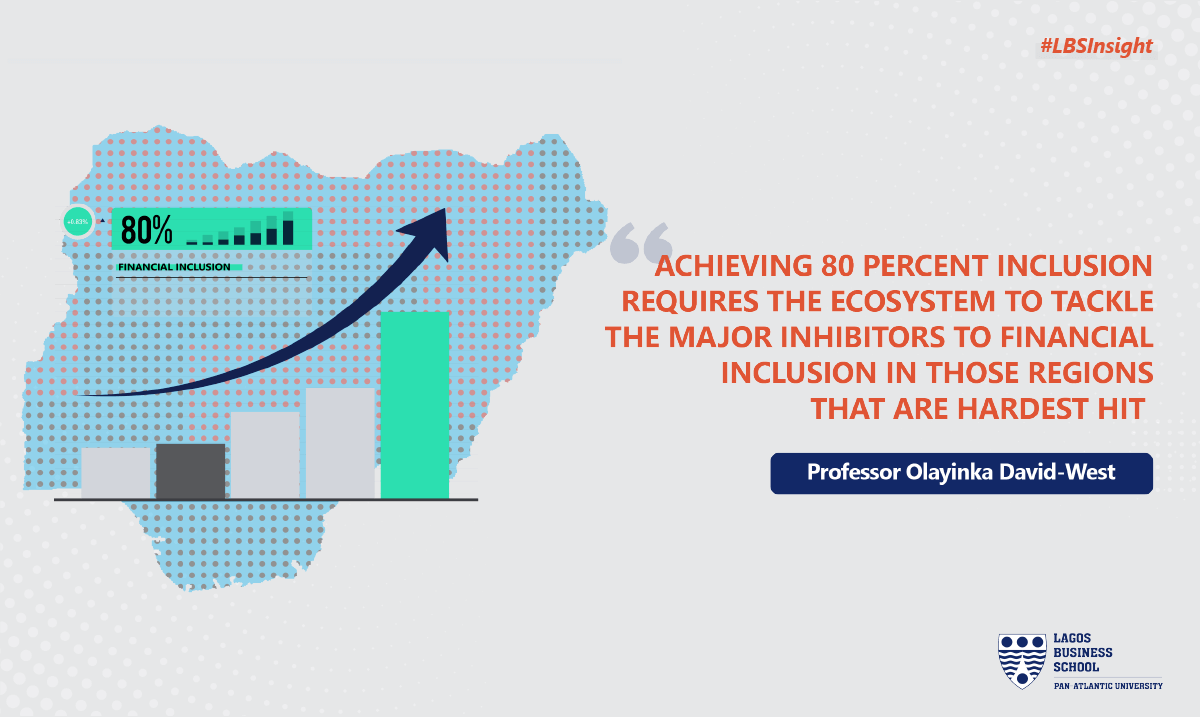The first National Financial Inclusion Strategy (NFIS) was launched in 2012 and between then and now, financial exclusion has only reduced by 2.9 percent (from 39.7 percent to 36.8 percent). However, while we may not have seen the needle move significantly in financial access numbers, we have gained valuable lessons along the way while identifying bottlenecks and inhibitors. These insights will be pivotal in the achievement of our financial inclusion aspirations.
In this article, we highlight the most important factors to keep at the fore as the 2020 deadline approaches.
The deadline remains 20 percent by 2020
The Central Bank of Nigeria (CBN) remains optimistic that 80 percent financial inclusion, as recorded in the NFIS, is still feasible. The original NFIS, launched in 2012, pegged a target of 80 percent inclusion by 2020 for the financial services industry. In 2018, the NFIS was revised to account for new ecosystem developments and realities while incorporating many changes, some of which we advocated in the Lagos Business School/Sustainable and Inclusive Digital Financial Services 2017 State of Market Report.
However, despite the change in strategy, the deadline and target remain the same. With less than 18 months to go, the pressure is on everyone to dig into the trenches and get things done.
Telcos can now lead the delivery of Digital Financial Services (DFS)
There have been speculations on if telco participation is the missing piece of the Nigerian financial inclusion puzzle. In 2018, telcos finally received a window to enter into the financial services space via the Payment Service Bank (PSB) licenses which are available to not just telcos, but also mobile money operators, retail chains (supermarkets) and banking agents. With the category and number of DFS providers increasing, it will be interesting to observe the impact this will have on inclusion rates.
The introduction of PSB licenses poses many exciting possibilities, especially since we have the advantage of insights from exemplar markets like India where PSBs have been in operation for many years. We also need to understand financial service consumers in order to develop appropriate products and even messaging which will not miss the mark.
We desperately need to solve for Agent Networks
To achieve financial inclusion, especially in an emerging market like Nigeria, we require two things — accessibility and affordability of financial services. Nigeria is a large country and the high cost of running and expanding bank branches is unsustainable. Agent networks provide a cheaper and more effective means of reaching the last mile.
In 2018, the Shared Agent Network Facility (SANEF) was launched to roll out 500,000 agents to extend financial services to people in excluded areas, especially the Northern region of Nigeria. The entry of PSBs and their agents into the market ought to also increase the reach and impact of agent networks in the ecosystem.
However, it is not as simple as that.
Agents currently face many business challenges which limit their viability, especially in regions where economic activity is minimal and mobile network infrastructure is absent. Improving the viability of agents’ business should be a priority if we are to succeed at widescale last mile delivery of financial services.
Exclusion remains highest in the North
Achieving 80 percent inclusion requires the ecosystem to tackle the major inhibitors to financial inclusion in those regions that are hardest hit. According to EFinA’s Access to Finance 2018 report, Northern Nigeria has the highest number of excluded adults with about 20.7 million excluded people. The reasons for exclusion vary from lack of access to mobile phones and identification documents to lack of awareness and proximity to the nearest financial institution.
It is 2019 and DFS awareness remains low
Among excluded populations, Digital Financial Services (DFS) awareness remains very low. Research shows that mobile money usage is primarily driven by the already banked (thereby defeating the purpose).
If we hope to move the needle on DFS adoption, then awareness must increase and urgently so.
Conclusion
In summary, 2019 is a critical year which will determine the realisation of the 80 percent inclusion target.


